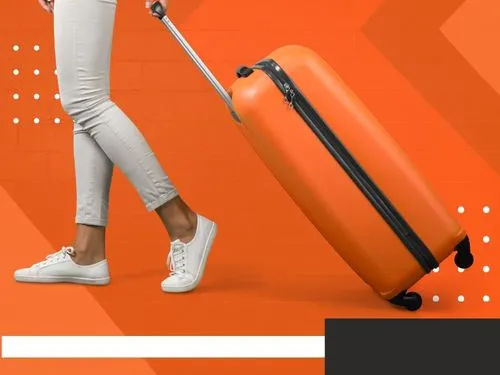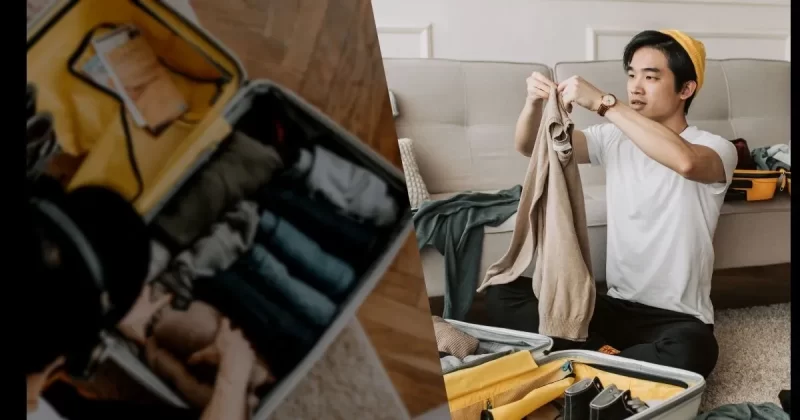For the seasoned traveler, their chosen piece of carry-on luggage isn’t just a suitcase; it’s an indispensable partner, a carefully selected tool that dictates the rhythm and ease of an entire trip. Frequent flyers, those road warriors and sky-high adventurers, understand a fundamental truth: the less time you spend wrestling with bags, waiting at carousels, or arguing with gate agents, the more time you have to focus on the mission at hand, whether that’s a crucial business meeting or the simple joy of discovery.
The quest for the best carry-on luggage is a profoundly personal one, a balancing act between capacity, durability, maneuverability, and strict airline restrictions. It’s an investment that pays dividends in reduced stress, saved time, and greater control over your travel experience. Forget the heavy, clunky relics of the past. Today’s market offers sleek, feature-packed options explicitly engineered for the nomadic lifestyle. This comprehensive guide will explore the essential qualities, key features, and top recommendations to help you find the carry-on luggage that will truly transform your next journey.
The Frequent Flyer’s Checklist: Best Carry-On Luggage Non-Negotiables
When you fly multiple times a month, you quickly learn which luggage features are luxuries and which are absolute necessities. The ideal carry-on for a frequent flyer must excel in three core areas: compliance, durability, and user experience.
1. Navigating the Size and Weight Minefield: Compliance is King
The single most critical factor for a frequent flyer is ensuring their bag always fits. Gate-checking a bag means sacrificing the very advantage a carry-on provides: speed and control.
- The Golden Rule of Size: While U.S. domestic airlines often adhere to a standard of 22 x 14 x 9 inches (56 x 36 x 23 cm) including wheels and handles, you must always cater to the strictest airline you fly, especially for international travel. Many global carriers, particularly in Europe and Asia, have tighter limits, sometimes closer to 21 x 13 x 9 inches. The savvy traveler opts for a bag that meets the smallest common denominator, often called a “Global Carry-On” size, to ensure universal compliance.
- Weight Matters: Although many large U.S. domestic airlines do not strictly enforce weight limits, international and budget carriers are notorious for doing so. Limits can range from a generous 35 pounds (15.8 kg) down to a punishing 15 pounds (6.8 kg). This makes the bag’s tare weight (its empty weight) supremely important. A lightweight carry-on allows you to maximize the weight of your actual packed items. For example, choosing a bag that weighs 6 pounds instead of 10 pounds gives you an extra 4 pounds of clothing or gear before hitting a strict limit.
- The Personal Item Strategy: Every frequent flyer utilizes the “personal item” to expand their capacity. This item, typically a backpack, tote, or briefcase that fits under the seat, should be a functional extension of the main carry-on. Look for a personal item that has a trolley sleeve to slide securely over the carry-on’s handle, consolidating your two bags into a single, manageable unit for easy transit.
2. Built for the Grind: Durability and Materials
Your luggage will be jostled, dragged, dropped, and crammed into countless overhead bins. It needs to be tough, but also efficient in design.
- Shell Material: Hardside vs. Softside:
- Hardside: Usually made from polycarbonate or aluminum, hardside bags offer superior protection for fragile contents like laptops, cameras, or souvenir bottles. Polycarbonate is favored for its balance of durability, low weight, and pressure resistance. Aluminum is the most rugged, but also the heaviest and most expensive.
- Softside: Typically made from ballistic nylon or high-denier Cordura, softside bags offer a crucial feature: external pockets. These allow quick access to travel documents, water bottles, or books without having to open the main compartment or rummage through your personal item. They also offer more flexibility, allowing you to compress an overstuffed bag into a tight overhead space.
- The Components That Fail First: A bag is only as strong as its weakest point. Frequent flyers know to scrutinize the three vital parts:
- Wheels: Look for spinner wheels (four wheels that rotate 360 degrees) made by reputable Japanese manufacturers like Hinomoto, known for their quiet, smooth glide. The wheels should be double-wheeled for stability and durability.
- Zippers: The industry standard for ruggedness is a self-repairing YKK zipper, ideally a size 8 or 10. For hard-sided luggage, look for zippers that are puncture-resistant or double-layered, which offer added security against theft.
- Telescoping Handle: The handle should be sturdy and exhibit minimal wobble. A high-quality handle should lock securely at multiple heights and be mounted externally (as common in Briggs & Riley designs) to maximize internal packing space.
3. The On-The-Go Experience: Efficiency Features
Frequent travel demands a bag that aids, rather than hinders, your movement through the airport.
- Laptop Accessibility: For business travelers, being able to retrieve a laptop quickly at security checkpoints is a lifesaver. The best carry-ons feature an external, padded laptop sleeve that allows for TSA-friendly removal, often located on the front of the bag for softsides or a hinged, quick-access compartment on some hardsides (e.g., the Monos Carry-On Pro).
- Internal Organization: Clamshell designs that open like a book (ordinary in hardside cases like the Away Carry-On) are excellent for even weight distribution and easy separation of clothing. However, softside bags with multiple internal and external pockets may appeal more to those who prefer detailed organization without using packing cubes.
- Compression Systems: A sound internal compression system, whether it’s straps or a structured panel, helps squeeze more into your bag and minimizes wrinkles. Some innovative designs, like the Solgaard Carry-On Closet, feature a built-in, removable shelving unit that acts as an organized closet upon arrival.
The Top Contenders: Brands Frequent Flyers Trust
While new luggage brands emerge constantly, a few names have earned the loyalty of the most frequent flyers for their blend of innovation, functionality, and unwavering commitment to quality.
1. The Professional Workhorse: Travelpro
Travelpro is a favorite among airline crew members for a reason: it’s engineered for daily use. Their Platinum Elite 21-inch Expandable Spinner is a benchmark for softside luggage.

- Why it works for frequent flyers: It’s relatively light, extremely durable with high-quality nylon fabric, and features an excellent MagnaTrac wheel system that self-aligns. Crucially, it has multiple external pockets, including a well-designed power bank pocket and a removable garment organizer. The optional expansion provides a safety net for longer trips or unforeseen shopping sprees.
- Perfect for: Business travelers, pilots, and anyone who values tradition and utility over trendiness.
2. The Lifetime Investment: Briggs & Riley
Known for its proprietary CX Expansion Compression system and its unparalleled “Simple as that” lifetime guarantee, Briggs & Riley positions itself as a premium investment. The warranty is truly no-questions-asked, even covering damage caused by the airline, which is a significant factor for those who see their bag as a tool of their trade.
- Why it works for frequent flyers: The external handle system maximizes interior packing space, and the CX system lets you expand the bag to capacity, then compress it back down to standard carry-on size. This feature is a game-changer for people who often travel with suits or bulky items.
- Perfect for: Luxury and business travelers who need maximum capacity and a guarantee that their bag will be repaired for life, no matter how it breaks.
3. The Modern Minimalist: Away and Monos
These brands spearheaded the direct-to-consumer luggage revolution, popularizing the sleek polycarbonate hard shell with modern features.
- Away The Carry-On: Famous for its built-in, removable battery pack for charging devices on the go, a feature that frequent travelers love for layovers and gate waits. It has a simple, efficient internal organization system and very smooth wheels.
- Monos Carry-On Pro: This model steps up the game with its quick-access front pocket, which can hold a 15-inch laptop, tablets, and documents. It’s perfect for digital nomads and tech-heavy travelers who need their gear within immediate reach. Both brands offer bags built to the strictest international dimensions, ensuring maximum compatibility.
- Perfect for: Tech-savvy travelers, design-conscious individuals, and those who prioritize a smooth, modern aesthetic.
4. The Budget-Friendly Contender: Travelpro Maxlite Series
If you need a reliable, feather-light option without the premium price tag, the Travelpro Maxlite Air V2 International Carry-On is a great hardshell choice. It hits the sweet spot for budget-conscious frequent flyers.
- Why it works for frequent flyers: It’s incredibly light, making it easier to lift into the overhead bin and maximizing your weight allowance. It provides reliable spinner wheels and the basic, necessary structure without any expensive, heavy extra features.
- Perfect for: Travelers prioritizing lightness and budget, or those whose trips are generally shorter and less gear-intensive.
The Frequent Flyer’s Packing Philosophy: Maximizing Your Investment
Having the best bag is only half the battle; knowing how to pack it efficiently is the other. Frequent flyers employ a minimalist, systematic approach to ensure their carry-on works to its full potential.
1. The Art of the Capsule Wardrobe
For multi-day or multi-city trips, every clothing item must serve multiple purposes. A “capsule wardrobe” consists of interchangeable pieces in a consistent color palette (such as neutrals like black, gray, navy, and white) that can be mixed and matched to create numerous outfits. This drastically reduces the total volume of clothing required.
- Example: Three shirts, two pairs of trousers, one jacket, and one pair of versatile shoes can easily create six to nine distinct outfits suitable for business or casual settings.
2. Rolling, Folding, and Compression: Choosing a Technique
- Rolling: Rolling clothes tightly is an effective way to minimize wrinkles and utilize all available space. It works best for casual wear, such as T-shirts, jeans, and knitwear.
- Bundling: The bundling technique involves wrapping all your clothes around a central object (like a toiletry kit) to minimize folds. This is the best method for dressier, more structured garments like blazers and button-down shirts, reducing creases at the elbows and shoulders.
- Packing Cubes: These are the most essential accessory for the frequent flyer. Packing cubes act like small, organized drawers for your suitcase. They help compress clothes, separate clean from dirty, and let you quickly transfer items from the bag to the hotel drawer. When a gate agent asks you to check your bag, having your essentials like medication, a change of clothes, and your laptop in one dedicated cube or pocket makes the transfer painless.
3. The Critical Final Weight Check
Never trust your own judgment. The only way to guarantee compliance and avoid last-minute anxiety is to weigh your bag before leaving home. Invest in a small, portable digital luggage scale. It’s a cheap, indispensable tool that saves frequent flyers from hefty fines at the check-in desk, especially when dealing with budget international carriers.
Prioritizing Compliance and Durability
The best carry-on for the frequent flyer is not the biggest, the flashiest, or the one with the most bells and whistles. It is the one that is just under the maximum acceptable size and weight, allowing you to bypass gate checks with confidence. It is a bag that prioritizes durability in its core components (wheels, handles, zippers) and offers innovative efficiency features (external laptop access, trolley sleeve, lifetime warranty).
Whether you choose the road-tested reliability of a Travelpro or the modern, tech-forward convenience of a Monos, your decision should align with your travel style and the airlines you most frequently fly. Invest wisely, pack smartly, and reclaim the time often lost to waiting and worrying. The world awaits, and your perfectly chosen carry-on is ready to roll.













